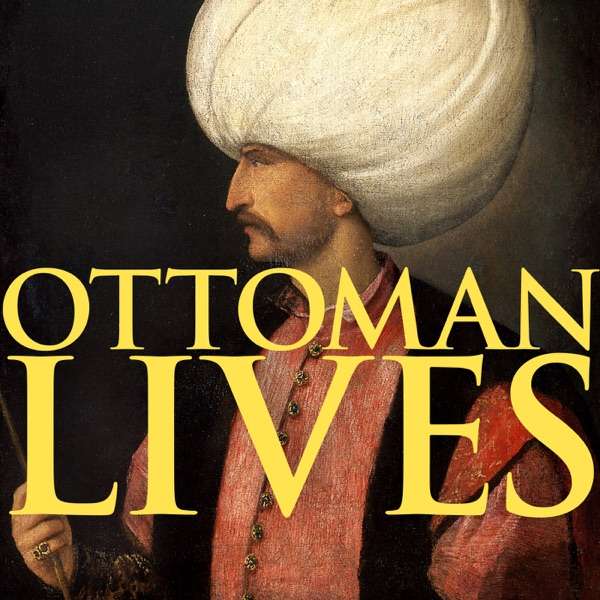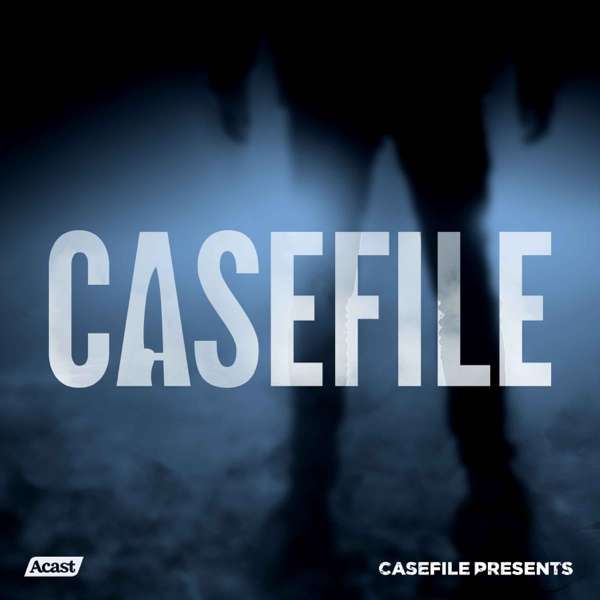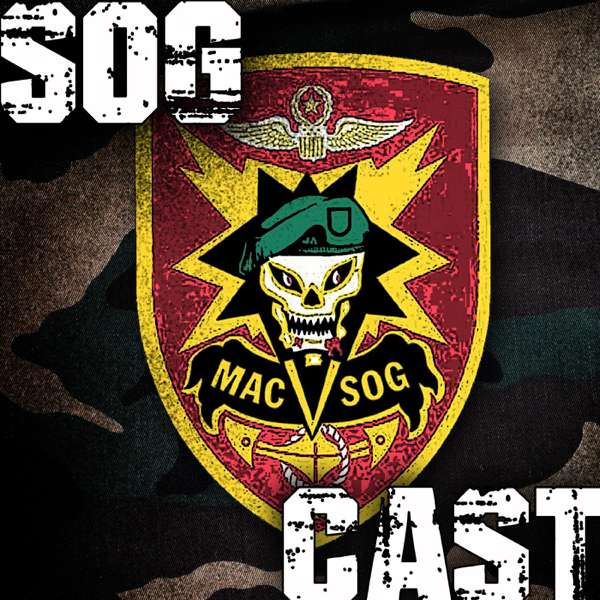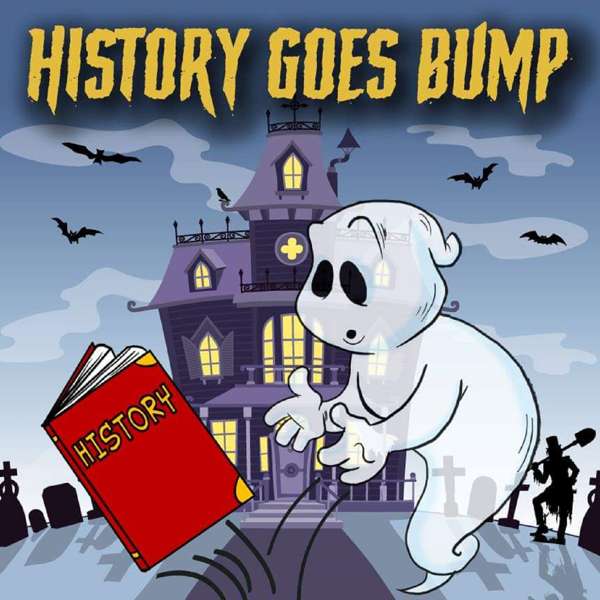Just in time for the anniversary of the beginning of the Gettysburg Campaign, we're re-releasing Narrative Episode 2, this time with all three parts strung together so you don't have to go searching for each part. This episode brings you through the month of June up the the night of June 30.
Excerpts from the script:
Synopse
[BEGIN "BEAR WALTZ"]
As 1863 began, the Union Army of the Potomac found itself in a general malaise. Its failed attempt at another push towards Richmond, known as the "Mud March," had served as the nail in the coffin of army commander Ambrose E Burnside. When Joseph Hooker took his place as commander of the Army of the Potomac, the changes he implemented helped boost the morale and confidence of his troops. But Hooker squandered that goodwill by bungling the Chancellorsville Campaign, in the early days of May 1863. While many believed that drunkenness or the artillery round that knocked him out for a short time were the probable causes of such bungling, Hooker himself told Major General Abner Doubleday, while on the road to Gettysburg, "I was not hurt by a shell and I was not drunk. For once I lost confidence in Hooker, and that is all there was to it."
After Chancellorsville, while Hooker was looking for ways to redeem himself, Robert E. Lee was setting the wheels in motion for his second invasion of the north.
Meanwhile, every day citizens in a bustling country town called Gettysburg, were going about their daily business while reading about the war in any or all of the town's three newspapers. War had not left them untouched, however. They had sent their ablest young men off to fight for the Union cause and constant threats of invasion plagued them since they first sent their local militia, the "Gettysburg Blues", to fight to preserve the Union, in 1861. By the Fourth of July of 1863, this small town of 2400 would be left with the daunting tasking of cleaning up the carnage and healing 10 times their number.
By mid-June, two great armies, totaling somewhere around 150,000 men, with tens of thousands of horses and mules, miles of wagons and, in one of those armies, human beings that were owned by other human beings, marched north into Pennsylvania. One army moving cautiously in order to determine its enemy's intentions, while the other army smashd a Union garrison at Winchester and then happily ran roughshod over the lush and untouched farmlands of Pennsylvania while its citizens, like Gettysburg's Sarah Broadhead wondered where their own army even was.
On the last day of June, a Tuesday, the lead elements of these two armies would be poised for the commencement of the greatest, bloodiest battle ever fought in the Western Hemisphere, but very few, if any, had any notion of that as they closed their eyes to sleep.
[BEAR WALTZ END]
...........
THE BATTLE OF BRANDY STATION
FRANK ROBERTSON: "The only time in my 14 month service with General Stuart that he seemed rattled was when Frank Dean, one of his couriers, dashed up and told him the Yankees were at Brandy Station. This was startling indeed. Frank Robertson, General Stuart's Staff."
[FADE IN DIFFERENT NIGHT SUMMER AMBIENCE][FADE IN GENTLE RIVER SOUND]
No fires were allowed in the Union cavalry camps on the night of June 8. Troopers ate cold dinners, then slept on the ground with their horses' reins looped around an arm. All was quiet and calm, for, just across the Rappahannock, camped Jeb Stuart's confederates.
Pleasonton's combined force of 11,000 cavalry and infantry was poised for a double-envelopment of JEB Stuart and his 9500 cavaliers.
Just around 4:30am, John Buford's Union division, led by the brigade of Colonel Benjamin "Grimes" Davis, crossed the Rappahannock River at Beverly Ford [HORSES SPLASHING] in a thick fog and brushed aside confederate pickets from the 6th Virginia Cavalry. [LIGHT MUSKETRY]
CONFEDERATE SOLDIER: "At about daylight the Yanks drove in our pickets stationed at Beverly's Ford on the Rappahannock and came near surprising us in bed...they charged up to our camp and killed and wounded several horses before we could get out. Confederate Artilleryman"
Behind the picket line were four batteries of Stuart's horse artillery, parked in preparation for the day's march. Further behind them, about two miles from the ford, at St James Church, was the brigade of William "Grumble" Jones.
Carbine and pistol shots crackled through the morning air waking Jones. It took only a moment for him to come to his senses and, once aware of what was going on, Jones sent the 6th and 7th Virginia to meet the threat. In their haste to get at these Yankees [CHAOTIC VOICES, TRAMPLING HOOVES, GUNFIRE] some troopers were barely dressed and many rode their horses bareback. Major Cabell E. Flournoy, of the 6th Virginia, was able to rally about 100 men and charged with them into the Federals. But Flournoy was soon forced to withdraw in a hurry as he and his men were badly outnumbered.
Lieutenant R. O. Allen's horse was wounded, causing Allen to be left behind during Flournoy's withdrawal. Allen took cover in a treeline when he spotted a Union officer, Colonel Benjamin Grimes Davis, at the head of the column of the Yankees.
Down to one bullet in his revolver, Allen decided it would be best spent taking out the brave blue-bellied officer daring to lead his men from the front. So Allen spurred his wounded horse towards Davis, whose back was turned.
In the nick of time, Davis turned around and faced Allen for long enough to see that Allen was charging at him. Davis began swinging his saber in an effort to hit the charging rebel. Allen saved himself by dropping down to his horse's side and fired his revolver at Davis, sending his last bullet through the colonel's brain. Allen galloped off to the safety of his own lines.
[ABOVE SOUND EFFECTS DIP IN VOLUME AND PAN TO LEFT SPEAKER]
The action of Grumble Jones' men enabled most of Stuart's artillery, which was camped dangerously close to Buford's troops, [OFFICERS SHOUTING ALL KINDS OF ORDERS; MOST INDISTINCT...CHAOS] to to fall back and form a line around St James Church.
Meanwhile, on Fleetwood Hill, Stuart, was drinking his morning coffee at his headquarters. Fleetwood Hill, which ran north and south, and was about a half mile northeast of Brandy Station and around four miles behind the scene of Buford's crossing. Stuart hastily sent his supply wagons towards Culpeper while his staff scurried this way and that to get themselves together to meet whatever danger was about to befall them. Stuart then ordered reinforcements ahead to the sound of the fighting.
As Buford's brigades pushed their way further into the confederate lines, they were met by the confederate troops of Brigadier General Wade Hampton, who formed his brigade to the right of Grumble Jones.
At that moment, Major Robert Morris, commander of the 6th Pennsylvania Cavalry, was ordered to clear the confederates from his front. Morris and the 6th Pennsylvania, also known as "Rush's Lancers", charged against the Confederate artillery.
CAPTAIN HENRY WHELAN- "We flew along-- our men yelling like demons. Grape and canister were poured into our left flank and a storm of rifle bullets on our front. We had to leap three wide, deep ditches and many of our horses and men piled up in a writhing mass in those ditches and were ridden over. Captain Henry Whelan, 6th Pennsylvania Cavalry."
The 6th Pennsylvania's charge failed when Confederates counterattacked and drove them back after a brutal hand-to-hand melee.
Major Morris was captured.
One Confederate described the charge as "brilliant and glorious."
[CHARGING CAVALRY, MEN SHOUTING, CANNON FIRING LOUDLY, HORSES SCREAMING]
The 6th PA suffered the highest casualty rate of any regiment at Brandy Station.
This charge, however, seemed to stabilize the battle for the time being.
As Buford's troopers began to fall back towards the Rappahannock, groups of them would dismount and join the infantrymen of Adelbert Ames' brigade which had come up in support.
While his regiments were forming to charge, messengers from Beverly Robertson's brigade brought Grumble Jones, on the confederate right, some unwelcome news: a large dust cloud had been seen rising from the direction of Kelly's Ford to the Confederates' right-rear.
Jones rushed a courier to Stuart.
JEB Stuart was on the scene of the St James Church line. The seriousness of the event still didn't seem to occur to Stuart or his staff as a few of his more youthful staff members climbed a nearby cherry tree. Jubilantly, they picked and ate and picked and threw cherries down to their comrades on the ground until a federal shell carened through the tree. The shell sent splintered branches flying and the young staff officers plummeting to the relative safety of the ground.
Stuart, beside himself with laughter, said: "What's the matter, boys? Cherries getting sour?"
Around this time one of Jones' couriers rode up to Stuart and delivered the message about the threat to his flank. The doubtful Stuart arrogantly replied, "Tell General Jones to attend to the Yankees in his front, and I'll watch the flanks."
Upon receiving this reply, Jones grimly scoffed: "So he thinks they ain't coming, does he? Well, let him alone, he'll damned soon see for himself."
...........
What the Second Battle of Winchester dispelled, however, were doubts about Ewell's competency at the helm of a corps and confirmed the faith that his troops had in him.
One of the Union boys lying mortally wounded by Ewell's bullets, was a member of the 87th Pennsylvania, Johnston "Jack" Skelly, a native and citizen of Gettysburg.
Upon learning of Jack's presence, Confederate soldier, John Wesley Culp, went to find him. Jack and Wes had grown up together in Gettysburg. In the 1850s, Wesley had taken employment with local carriage maker, C. William Hoffman. In 1856, Hoffman decided to move his business to Shepherdstown, Virginia and invited several of his employees along. Wes's brother, William declined, but Wesley Culp accepted the invitation, leaving his childhood home, family and friends behind in Gettysburg. In Shepherdstown, Wesley and Hoffman's three sons joined the Hamtramck Guards, the local militia and drinking club. When Civil War broke out, Wesley bid his fellow Gettysburg transplants a fond adieu as they left to return to Pennsylvania and fight for the Union. Wesley and the rest of the Hamtramck guards enlisted in the Confederate service on the 20th of April, 1861 at Harpers Ferry. They became Company B of the 2nd Virginia, which was placed in the First Brigade under the command of Colonel Thomas Jonathan Jackson The brigade and the man would, in a short time, earn the nickname "Stonewall".
But Culp was a confederate. Sure that he was dying, Jack asked Wesley to deliver a letter to Jennie should he ever find himself back home in Gettysburg. Wesley took the letter, promising to do so.
LINCOLN: "To General Hooker:
Winchester and Martinsburg were both besieged yesterday...the enemy holds both places. Confederate troops are crossing the Potomac at Williamsport… I would like to hear from you.-- Abraham Lincoln."
[CADENCE BEGINS]
From Winchester, Ewell sent Robert Rodes' infantry division, north to raid Chambersburg, Pennsylvania. Along with Rodes' Division was the irregular cavalry brigade of Albert Jenkins, a colorful character who often tucked his long beard into his belt when the wind was up.
At 2am, on June 15, Jenkins led his cavalry on the road to Chambersburg.
.............
SARAH BROADHEAD: "No alarm was felt until Governor Curtin sent a telegram, directing the people to move their stores as quickly as possible. This made us begin to realize the fact that we were in some danger from the enemy, and some persons, thinking the Rebels were near, became very much frightened, though the report was a mistake. Sarah Broadhead"
Sarah "Sallie" Broadhead, was a Gettysburg resident and wife of train engineer Joseph. Thirty year old Sarah and Thirty-two year-old Joseph had a four year-old daughter named Mary. Together, they lived at 217 Chambersburg Street. After hearing the news of Confederate mischief along the Potomac, Sarah began a journal.
Ever since word of the Confederates crossing the Potomac first reached them, residents of Gettysburg and many other south-central Pennsylvania towns were beginning to panic and prepare as best they could for the approaching invaders. No one knew just where the Confederates were heading. No one knew what the Confederates would do to them should they descend on their city or town. And no one knew where their own army was to protect them and drive off the rebel hordes.
Civilian militias began to form. Still, the townspeople worried, for what good could days-old militia do against Robert E Lee's formidable veterans?
TILLIE PIERCE: "We had often heard that the rebels were about to make a raid, but had always found it a false alarm. ~ Tillie Pierce, Gettysburg Resident"
In truth, Gettysburg lived under a constant cloud of worry ever since the Civil War broke out in 1861. Just ten miles to its south, is the border with Maryland. While a border state that remained within the Union, Maryland's doing so was fragile. Its citizens had sympathies for both sides of the war.
Virginia, the state which was home to the Confederate capital of Richmond, was not much farther beyond Maryland.
On April 22, 1861, Gettysburg proudly sent "The Gettysburg Blues", its local militia that mainly had experience performing ceremonial duties, off to fight for the Union. Almost immediately, townspeople began to feel uneasy about sending its only armed forced away. And, so, that same night, the people of Gettysburg gathered in the courthouse to discuss forming a new Home Guard to ease the peoples' minds. Out of nowhere, two unknown men burst into the courthouse yelling "the Rebels are burning Hanover and Gettysburg is next!" The report was that 500 or more "pug-uglies" from the city of Baltimore--a city with deep Confederate sympathies-- were heading towards Gettysburg. As the citizens filtered out into the street, a single rider galloped into town along York Street. "To arms! The Rebels are coming!"
The calm curiosity that the people of Gettysburg embodied only a moment before, gave way to utter panic and chaos. Word spread quickly through the town. The streets were crowded with panic-stricken people. Bells pealed across town to raise alarm. Riders in the style of Paul Revere were dispatched in every direction to warn neighboring hamlets and farms. Of course, all firearms and the ammunition for those firearms had left hours earlier with the Gettysburg Blues. All that was left was a smattering of shotguns, antique muskets, shovels, hoes, axes, knives and various other items of little to no real use against the coming pug-uglies. Finally, after midnight, Gettysburg's cooler heads decided to send a train to Hanover to see just what was up.
The train returned around dawn with the shocking news: it was a false alarm. Furthermore, those unknown harbingers of alarm who started the pandemonium, were nowhere to be found.
Time and time again, between June of 1861 and June of 1863, the alarm would be raised, panic would ensue, and all would be let down as no Rebel threat had developed. The only time that the threat came close to being real was in 1862 when Jeb Stuart's Cavalry invaded Pennsylvania and raided Chambersburg, then appeared at the foot of the mountains at Cashtown, just 8 or so miles west of Gettysburg. But Stuart had no interest in Gettysburg that day and her citizens, once again, breathed a sigh of relief.
Stuart's raid aside, a sense of "the boy who cried wolf" began to lull the people of Gettysburg into a complacency that would last up until the first shots of the battle.
By nightfall of June 15, 1863 Jenkins cavalry brigade, the lead element of Robert Rodes' Confederate division, had reached Chambersburg, some 25 miles to the west of Gettysburg. A flood of refugees would soon filter through Gettysburg with that same old song of "the Rebels are coming."
Not all Gettysburg residents brushed these warnings off in June of 1863. Michael Jacobs, a professor at Pennsylvania College, was not so dismissive when he noted in his diary that there were "unmistakable signs of the coming storm."
.............
MEADE TAKES COMMAND
[FADE IN GENTLE SUMMER NIGHT SOUNDS. CRICKETS, crackling fire, etc.]
It was 3 am and so quiet at Fifth Corps headquarters that the slightest sounds could be noticed. So it was no surprise that Fifth Corps Commander Major General George Meade's slumber was disturbed by the sound of voices outside his tent. There was a visitor to camp who was asking for access to the General. Being that Meade's staff officers were all camped in the vicinity of his tent, they, too, could hear the voices and, one by one would emerge, curious as to the matter at hand.
When Meade lay down to sleep only a few hours earlier, he did so having fulfilled his duties for the day and expecting to wake up in the morning and fulfill whatever duties he would be assigned for that day. He marched his men 16 miles from near the Monocacy River to Ballinger's Creek, three miles due south of Frederick, Maryland. Upon arrival, he went ahead into town to find Hooker, whom he had not seen since June 13. Hooker had not yet arrived, so Meade returned to his corps, saw to their encampment and retired for the night. He was unaware that Hooker had resigned the night before and that one of General-in-Chief Halleck's staff officers, Colonel James A. Hardie, and a small party were on their way to Meade.
Hardie roused Meade in his tent and told him that he came bearing "trouble". Meade, whose sense of humor was just as groggy as he was at this hour, assumed that Hardie's mission was, as he wrote his wife, "to either relieve or arrest me". So, Meade's response to Hardie's joke was "my conscience is clear."
Hardie then handed Meade a communication to read which relieved Hooker as commander of the army of the Potomac and put Meade in his place. Unlike previous times when Lincoln replaced a general, this was not an offer, nor a request. It read:
"GENERAL: You will receive with this the order of the President placing you in command of the Army of the Potomac. Considering the circumstances, no one ever received a more important command; and I cannot doubt that you will fully justify the confidence which the Government has reposed in you."
It was an order... and Meade, ever the dutiful soldier, complied with the order.
[BLEND IN THREE HORSES AT A WALK]
And so, Meade, Hardie and Meade's son and staff officer, Captain George Meade, Junior, rode to Army Headquarters in Frederick to meet with Hooker. There was little conversation among the three as they rode. Now and again Meade, the elder, would depart from his visibly evident deep-thought and ask Hardie a question. Then he'd go back to thinking.
[CROSS FADE HORSES TO INDOOR SOUNDS. CRACKLING FIRE, FOOTSTEPS ON A WOODEN FLOOR, PERHAPS AND INDISCERNIBLE VOICES]
At Frederick, he met with Hooker who, with his usual charm, tried his best to assuage the embarrassment and awkwardness of the occasion. They sat down and had a lengthy discussion and were eventually joined by the Army's chief-of-staff, Daniel Butterfield.
[CROSS FADE INDOOR TO CRICKETS]
Finally, Meade came out of the meeting with the same grave look on his face as when he went in. Upon seeing his son, he perked up slightly, "Well, George," he said, "I am in command of the Army of the Potomac."
It can be assumed that Meade learned about the disposition of the army, though he did admit that he had "no exact information about the condition of the troops and the position of the enemy." He would also later claim that Hooker offered him "no intimation of any plan or any views he may have had up to that moment."
Meade formally accepted command in a message to Halleck.
MEADE: "The order placing me in command of this army is received. As a soldier I obey it, and to the utmost of my ability will execute it. George Gordon Meade."
Overall, Meade's appointment to command was well received, even though most outside of his own fifth corps knew little about the man. A good deal of the rank and file wished that McClellan would be reinstated and Lieutenant Henry P. Claire, the 83rd NY's adjutant, prayed that McClellan be placed in command, once again. If not, then he prayed that "Jeff Davis enters Washington, hangs Lincoln and all his damnable associates proclaiming himself President." Claire was willing to part with a month's pay "to see Washington sacked and the present clique chased like bayed foxes with bloodhounds after them."
In the high command, Major General Daniel Sickles was the only general who was sad to see Hooker go and he and Meade were not friends. The others were pleased with the selection. John F Reynolds was the ranking general of them all and Lincoln had offered him command of the army prior to assigning it to Meade. But Reynolds had seen how much Washington meddled with the army commander's operations and respectfully declined the offer. Reynolds was also Meade's friend. When Reynolds first saw Meade after he took command, Meade told him that his new job was, not only a surprise, but an unwelcome one, at that. Reynolds told Meade that the commanding general could rely on him and that he was satisfied to see Meade at the head of the army.
Things were now accelerated. Meade conferred with staff and drew up orders announcing that he was placed in command of the army along with marching orders for the day. Each corps knew where it needed to be by nightfall and by what roads and, by nightfall, all were where they should have been. Only Hancock's Second Corps was just a few miles short of its destination because it got a late start due to receiving its orders late.
GENERIC UNION SOLDIER: "Carrying rifle, knapsack and contents, accoutrements, haversack containing rations and sixty rounds of cartridges-- over fifty pounds.-- Union Sixth Corps soldier."
Lee's Army was enjoying the bliss of ignorance. Longstreet's and Hill's Corps were concentrated around Chambersburg, to the west of Gettysburg, while Ewell was still split up between York, to the east and Carlisle, to the north. Stuart had now ridden himself so far from Lee that the Union army was separating the two. Therefore, Lee had lost the "eyes and ears"-- as he described cavalry's main role-- of his army.
The 9th Alabama, of Anderson's Division of AP Hill's Corps, passed through Marion and Chambersburg, Pennsylvania. One soldier recorded a touching event that he witnessed in his diary.
GENERIC CONFEDERATE SOLDIER: "The females of Chambersburg seem to be spiteful, make faces, sing, wave their banners, etc. A widow in the place discovered the knapsack of her deceased husband in the command. She wished it and the soldier gave it to her. He had picked it up on the battlefield of 'Gaine's Mills,' where we fought the Pennsylvania Bucktails. Such is war."
At around 3am on the morning of June 28, JEB Stuart's cavalry had finally crossed the Potomac and was in Maryland. But Stuart... was east of the Union army... which was east of his own army. Along the way, Stuart's men managed to cut the telegraph lines connecting Frederick, Maryland to Washington D.C., stymying the Army of the Potomac's ability to quickly communicate with Washington. Meade set up a courier service along the telegraph route, but this slowed information coming to and going from his Headquarters. As Hooker had to before him, Meade had to rely on Colonel Sharpe's Bureau of Military Information.
It was Lee's intention to hold the Cashtown Gap in order to protect his lines of communication, supply and retreat back into the valley and Virginia. A.P. Hill's Corps took the lead, east through the mountains to Cashtown, followed by Longstreet's Corps. At the head of Hill's column was the division of newly-minted Major General Henry "Harry" Heth. Upon reaching Cashtown, Heth detached a mix of North Carolina and Mississippi troops to guard his flank to the south at Fairfield with specific instructions to keep an eye on the approaches from Emmitsburg, Maryland to the south.
Upon reaching Cashtown, a gunner in Hill's corps was unsettled by the words of a woman on the roadside: "You are marching mighty proudly now," she shouted, "but you will come back faster than you went." Unable to resist the temptation, an officer asked why she thought that was. "Because," she quickly replied, "you put your trust in General Lee and not in the Lord Almighty."
Up north in Carlisle, General Ewell declared this day "a day of rest". Despite this, he sent Jenkins' Cavalry ahead to Harrisburg, his next objective. Stonewall Jackson's former chaplain, the Reverend B. Tucker Lacy, held two church services at the Carlisle Barracks. General Ewell was asked by local clergy if he objected to their offering their routine prayer for President Lincoln at their respective churches. Ewell replied, "Pray for him. I'm sure he needs it."
Longstreet's and Hill's Corps were almost entirely up in the Keystone state with Longstreet at Chambersburg and Hill, about seven miles to Longstreet's east, at Fayetteville. Both corps were within twenty five miles of Gettysburg.
Meanwhile, General-in-Chief Halleck gave Meade a wide berth with which to command the army. In essence, he gave Meade what he denied Hooker. --OR (read both)-- the red tape was cut in order to expedite the response to this national emergency. When Meade requested permission to pull the 7000-man garrison from Harpers Ferry, Halleck approved.
Part of Meade's orders placing him in command also gave him the authority to promote, demote or replace any officer in the army to a position that he saw fit. Between June 28 and June 30, Meade would jump three promising young captains up four ranks to brigadier general. Those junior officers were Elon J Farnsworth, Wesley Merritt and the long-haired George Armstrong Custer.
Early in the evening of the 28th, Gettysburg resident, Samuel Herbst, whose horse, somehow eluded Early's Confederates on the 26th, rode the animal to the south, towards Emmitsburg, Maryland. He returned with very welcomed news: thousands of Federal soldiers were on their way to Gettysburg. One Gettysburg resident remembered: "The news flew through the town like wildfire."
_______________________________________________________
Help us make these episodes come out more quickly. Become a patron! CLICK HERE

 Our TOPPODCAST Picks
Our TOPPODCAST Picks  Stay Connected
Stay Connected







